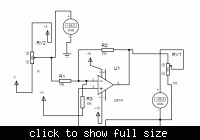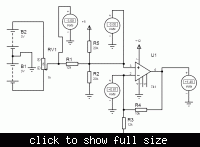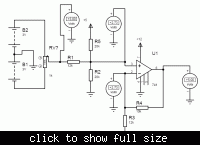hameeds01
Advanced Member level 2
- Joined
- Aug 23, 2005
- Messages
- 599
- Helped
- 75
- Reputation
- 156
- Reaction score
- 41
- Trophy points
- 1,308
- Location
- Islamabad Pakistan
- Activity points
- 4,540
Hi guys!
I want to know how to convert the analog voltage level range (-3v to +3v) to analog voltage level range (0v to 5v)
(-3v to +3v) Input -------> CONVERTER --------> (0v to 5v) Output
I want to know how to convert the analog voltage level range (-3v to +3v) to analog voltage level range (0v to 5v)
(-3v to +3v) Input -------> CONVERTER --------> (0v to 5v) Output


